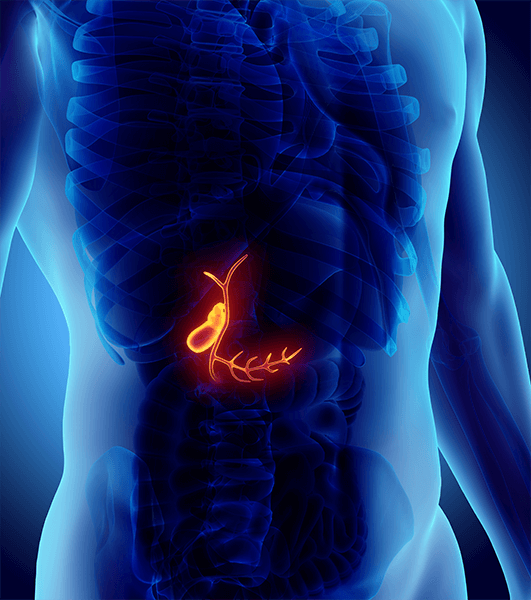What is a cholangioscopy?
SpyGlass cholangioscopy is a noninvasive endoscopic procedure that can be used for visualization, diagnostic evaluation, and therapeutic intervention of bile duct abnormalities. In the past, cholangioscopy was very fragile, had limited maneuverability, and required two operators. By overcoming these limitations, the SpyGlass system is considered a breakthrough in the field of endoscopic technology. It can be used in the evaluation and management of diseases such as:
- Biliary system cancer
- Bile duct cancer
- Gallbladder cancer
- Gallstones
- Primary sclerosing cholangitis
- Biliary papillomatosis
For more information on this endoscopic procedure, connect with your nearest GI Alliance location and schedule a consultation to talk to a gastroenterologist.

How is the SpyGlass system used?
The SpyGlass system can be used by a single operator and has increased maneuverability allowing easy visualization of the biliary tree, extraction of tissue for biopsy, and treatment of bile stones, strictures, or other pathology. It has separate channels for the use of instruments and irrigation. The procedure requires decreased fluoroscopy time which results in decreased radiation exposure. The SpyGlass system can help to detect GI issues. To schedule an appointment at GI Alliance for this procedure, contact a GI specialist.
Is the cholangioscopy system safe?
The SpyGlass cholangioscopy system is very safe compared to the earlier types of cholangioscopy, however, there remains a minimal risk of complications which include cholangitis, pancreatitis, bacteremia, abdominal pain, and nausea. To learn more about the procedure in detail contact the GI specialists at GI Alliance today.
What happens during the procedure?
To an extent, the alternatives to the exam will depend on the reason for needing to undergo the small bowel capsule in the first place. In most cases, esophagogastroduodenoscopy is the best method to evaluate abnormalities in the small intestine. However, an x-ray called a small-bowel-follow-through can evaluate the small intestine as well. An enteroscopy can also be used to evaluate the upper portion of the small intestine and can be used for therapy.

